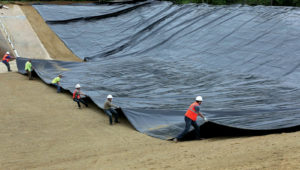
GeoDallas is quickly approaching. On Oct. 16–17, 2018, the geotechnical community will gather to hear industry experts share case studies, technical lectures, short courses and panel discussions based on the conference’s theme “Geosynthetics in Transportation and Environmental Applications.”
Join your peers as we shine a spotlight on the Engineer Research and Development Center of the U.S. Army Corps of Engineers (USACE), answering some challenging questions facing our community, such as how do we improve America’s infrastructure and how can we minimize the impact of emergency levee repairs?
Morning Plenary
Advancing the Nation’s Infrastructure: The USACE
Jeb Tingle, Ph.D., P.E., Research Civil Engineer, U.S. Army Engineer Research and Development Center
Annual reviews of the nation’s infrastructure describe a deteriorating network with restoration requirements far outpacing agency budgets. This session will outline the role that research and development play in maximizing the impact of infrastructure projects with limited budgets by:
- Reviewing why “business as usual” is unsustainable
- Describing the role that research can play in improving infrastructure solutions
- Demonstrating the value of innovation in infrastructure projects
- Outlining a road map for implementing new technologies to improve project efficiency
Case Study
A Next Generation Geomembrane Solution for Water Management at the USACE Engineer Research and Development Center
Andy Durham, P.E., Senior Geosynthetics Engineer, Owens Corning
The Engineer Research and Development Center (ERDC) at the USACE facility in Vicksburg, Miss., is home to the Rapid Repair Levee Breach facility, used to simulate emergency levee repairs during substantial hydraulic events. This facility was constructed in 2009 but fell into disrepair after a liner failure, and subsequent erosion and sedimentation damage. Due to schedule and budget constraints, the ERDC agreed to an innovative solution for lining one of the storage basins at the facility. A prefabricated, reinforced composite geomembrane (RCG) was installed, saving significant time and labor over a conventional, field-welded geomembrane. With substantially higher strength, puncture and tear resistance than conventional materials, this liner provided the required performance with a rapid, cost-saving installation technique.
 TEXTILES.ORG
TEXTILES.ORG


